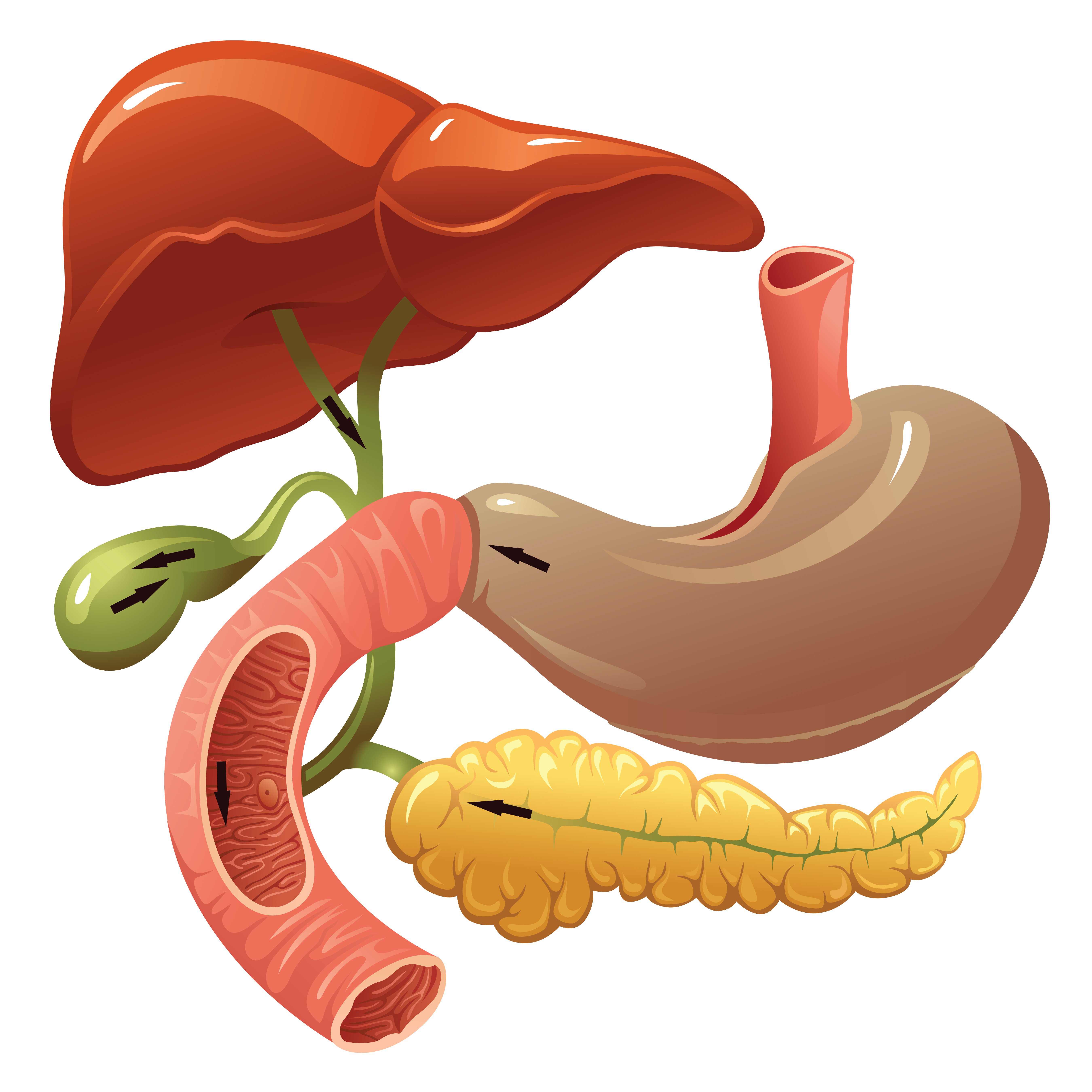This is a great question that is often asked in the context of food combining. Much of the information disseminated about food combining in the raw food community is decades-old, so here I will cover this topic from the perspective of current digestive physiology. Our body makes three main types of digestive enzymes: amylase for carbohydrate digestion, proteases for protein digestion, and lipase for fat digestion.
Depending where we are in the digestive system, our body will release certain types of digestive enzymes. For example, when we are chewing food, our salivary glands release saliva along with two types of digestive enzymes: salivary amylase for carbohydrate digestion and lingual lipase for fat digestion, so carbohydrate and fat digestion begin in the mouth. After food has been chewed, it is swallowed and moves down the esophagus into the stomach. There, the food comes in contact with other digestive factors such as hydrochloric acid and a protein digesting enzyme called pepsin, so protein digestion begins in the stomach.
After food leaves the stomach, it moves into the small intestine, where it interacts with digestive factors secreted by the pancreas. These factors include the enzymes amylase, protease, and lipase for carbohydrate, protein, and fat digestion, respectively. The pancreas releases ALL THREE types of these enzymes at the same time. This fact is important, given that the foods that we eat are some combination of carbohydrate, protein, and fat. One notable exception is oil with 100% of the calories from fat.
Here are some plant foods and their carbohydrate, protein, and fat content as a percentage of calories:
| Type of Food | Carbohydrate | Protein | Fat |
| Fruit | 89% | 6% | 5% |
| Vegetables | 73% | 18% | 9% |
| Nuts and Seeds | 16% | 11% | 73% |
| Legumes | 66% | 30% | 4% |
| Grains | 80% | 12% | 8% |
| Oil | 0 | 0 | 100% |
| Avocados | 19% | 5% | 76% |
| Coconuts | 17% | 4% | 79% |
| Spirulina | 26% | 64% | 10% |
As you can see, all of these foods contain some amount of each of the three macronutrients. We think of fruits as being a high in carbohydrates, but they also contain some protein and fat! Occasionally, I hear people say that nuts and seeds are a rich source of protein, but in reality, they are much higher in fat. Per calorie, vegetables are a more notable source of protein than nuts and seeds.
Our take home message here is that all whole foods are some combination of carbohydrate, protein, and fat so it is important that the body release enzymes for digestion of all three of these macronutrients at the same time. Additionally, these enzymes do not cancel each other out as some food combining literature states. As mentioned earlier, there is much that we have learned about digestive physiology since food combining principles were first introduced years ago, and we will certainly learn more in years to come. This does not mean that we should disregard food combining principles altogether, but instead use the individual principles that best support our personal health.
Here is video summarizing this information:
For those of you interested in learning more about food combining from the perspective of current research and digestive physiology, my book, the Raw Food Nutrition Handbook: An Essential Guide to Understanding Raw Food Diets provides this information using easy to understand language. I cover this topic and many more hot topics in raw food and nutrition in general to support you in your health journey.
One of the best ways to keep in touch with us is to join our email list. You’ll receive a free copy of Our Top 12 Strategies for Long Term Success on A Raw Plant-Based Diet eBook along with regular information about raw food and plant-based diets and periodic promotions for our classes, events, and other offerings!

